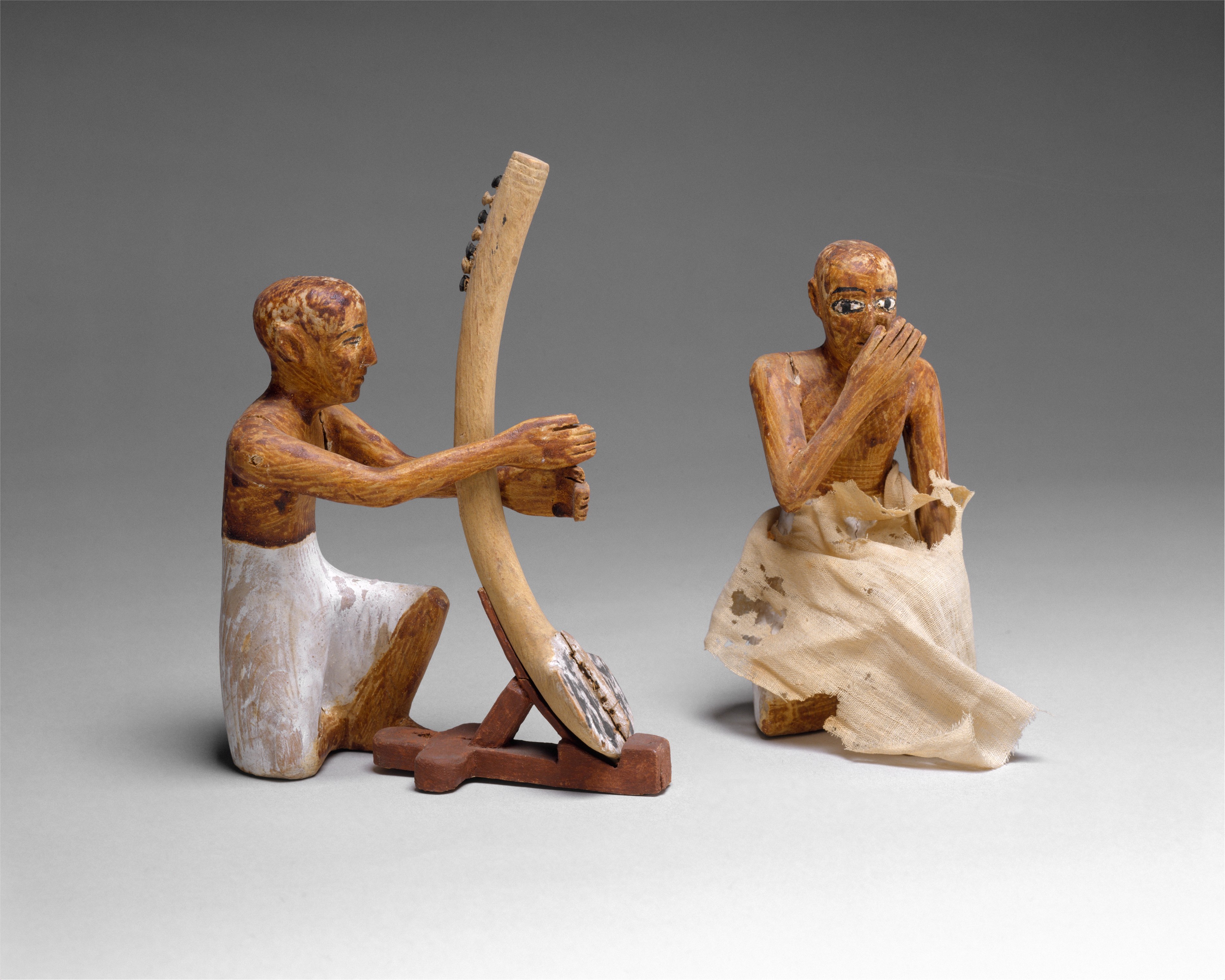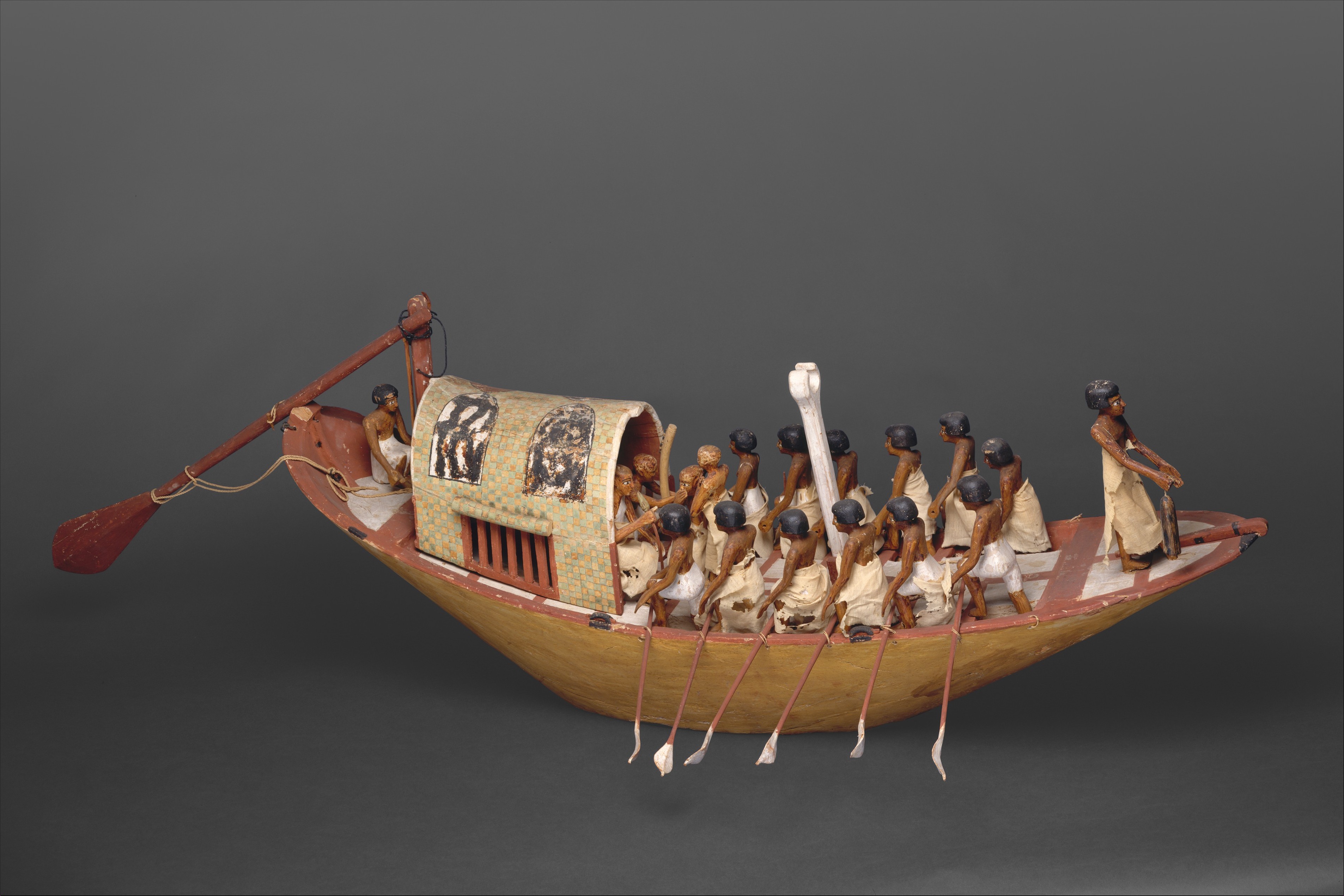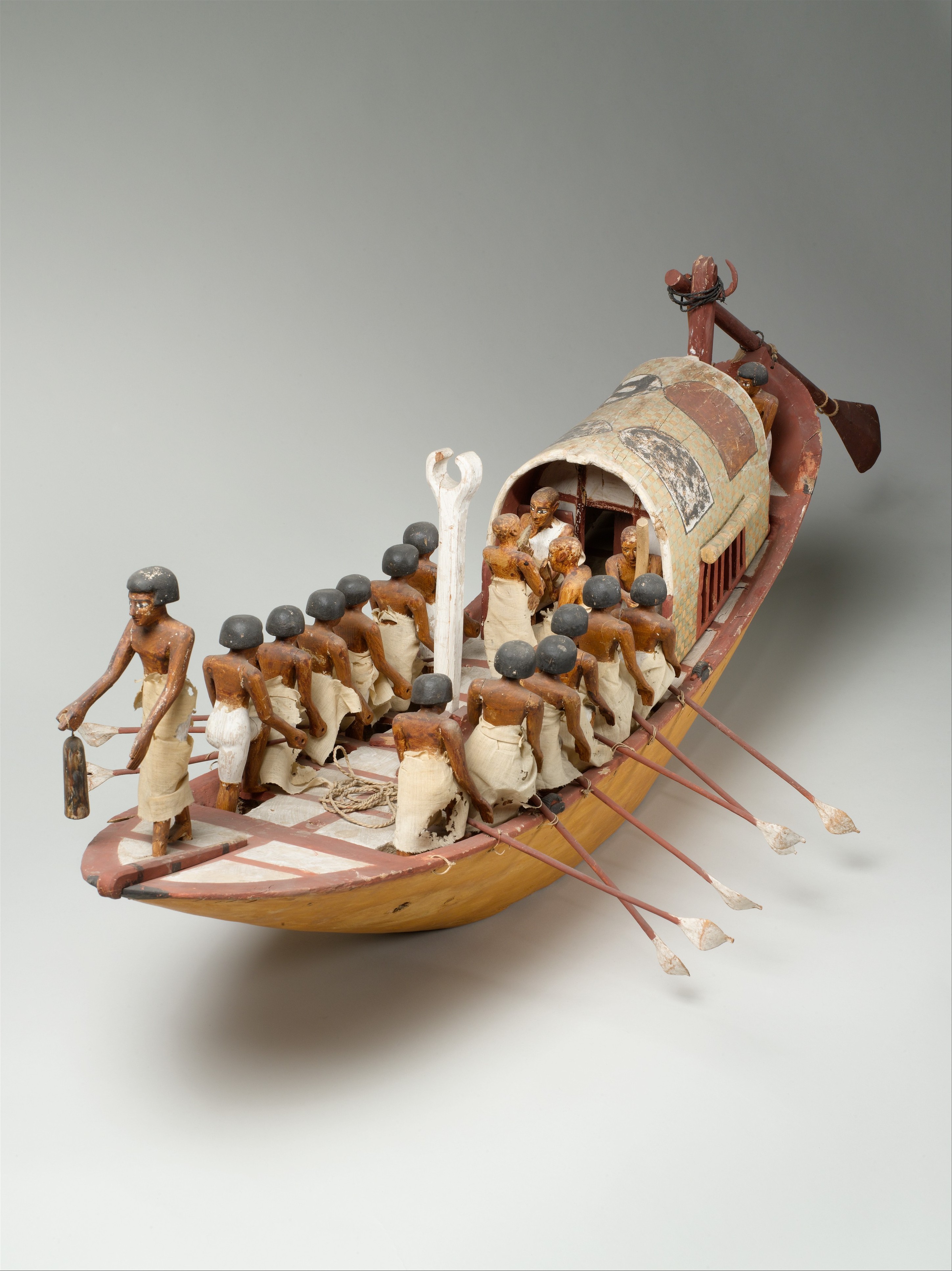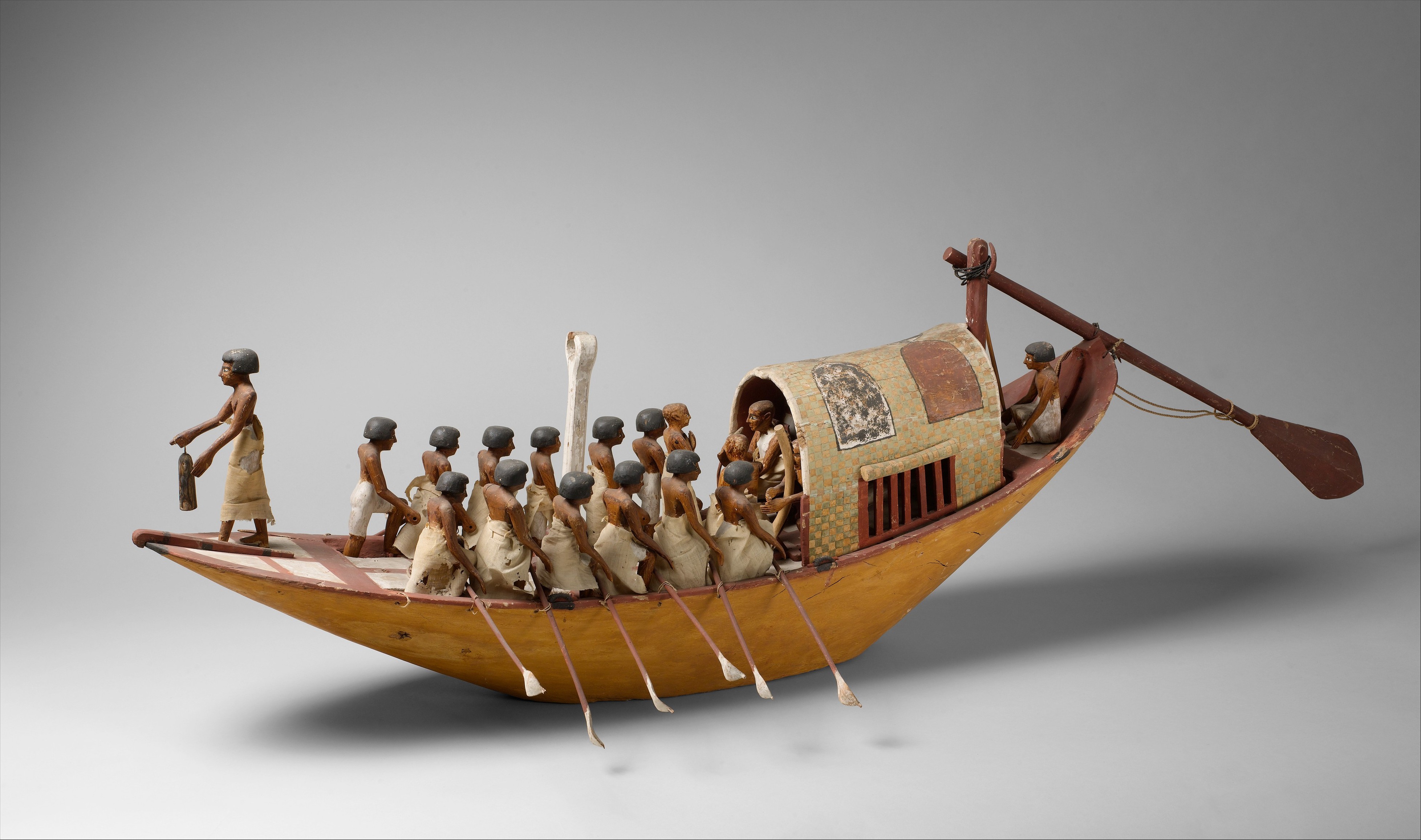
In ancient Egyptian tombs among the funeral inventory, archaeologists have repeatedly found such miniatures as this wooden boat 128 cm long. Symbolizing a journey to the afterlife, the artifact was found in a tomb of the 2nd millennium BC. e., where the remains of an influential official named Meketre rested. The official served as chancellor under Pharaoh Nebhepetre Mentuhotep II from the XI dynasty and found the pharaohs from the XII dynasty.

The main character of the composition was Meketre himself, who stands next to the canopy and inhales the scent of a lotus. A musician and a singer sit next to him, and entertain their master. The man standing in front of Meketre is the captain of the ship, waiting for orders, behind him there are figures of 12 rowers in two rows, and an observer is standing on the bow. In the center of the ship is a white post that once supported the sail. It is possible that the miniature depicts a real ship that belonged to Meketre during his lifetime.

The tomb with finds, among which was this artifact, was discovered in 1920 by the American archaeologist Herbert Winlock. In 1919, the explorer arrived in Luxor, a city on the east bank of the Nile, where full-scale excavations were carried out under the guidance of specialists from the Metropolitan Museum of Art. After carefully studying the tomb of Meketre, Winlock decided to draw an exact plan of its location in order to map the necropolis. It was then that the researcher stumbled upon a hidden room with various models of boats. Some of them were transferred to the Egyptian Museum in Cairo, some ended up in the Metropolitan Museum of Art.


